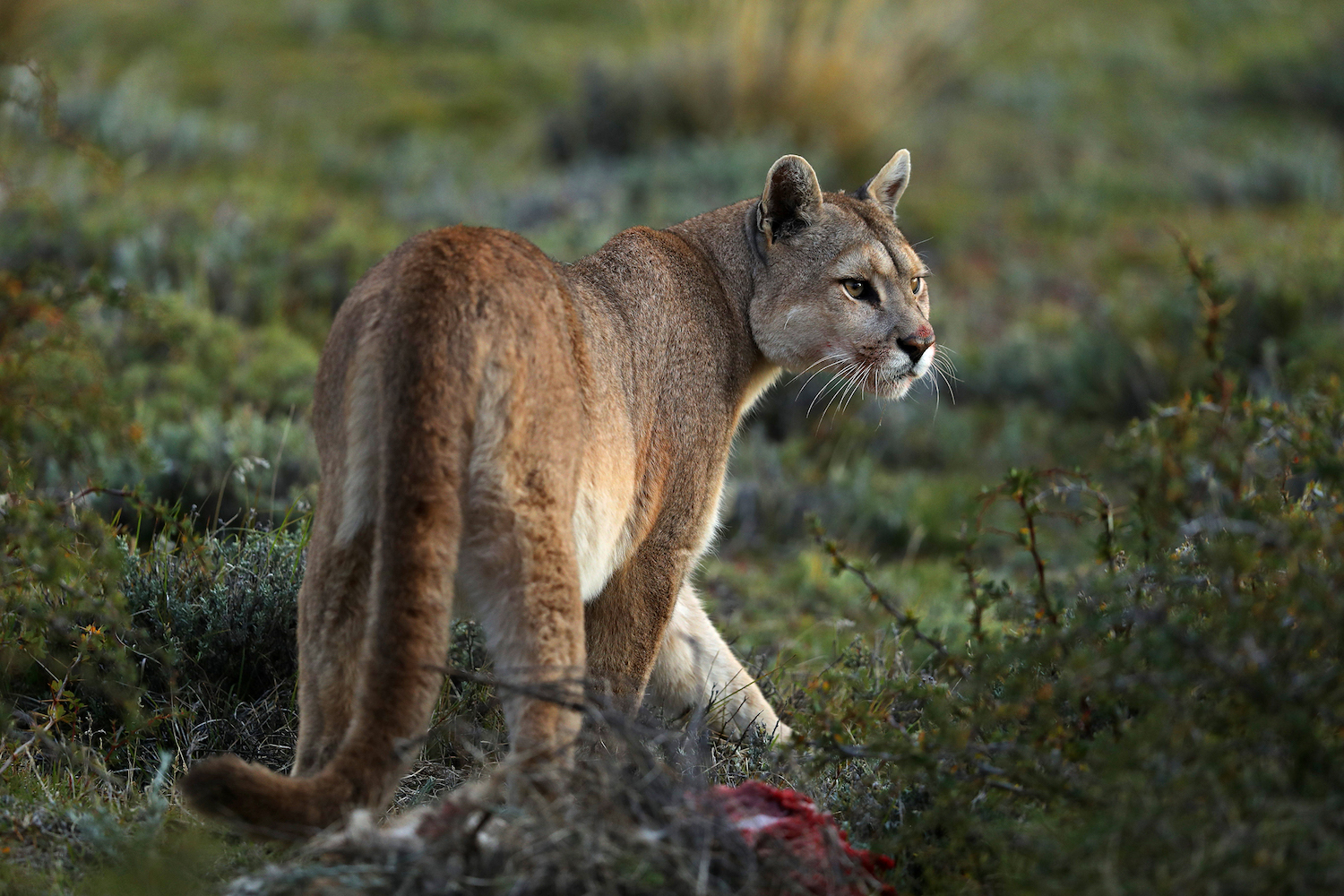

Maternal dens are usually caves or other covered areas offering protection for the cubs. After a gestation period of 91 days, a litter of 1 – 6 cubs are born. Females are in estrous for 8 days of a 23 day cycle. One litter of cubs is born every 2 – 3 years. Pumas are good climbers and are capable of swimming.įemale pumas reach sexual maturity between 1 – 3 years. They are very fast cats and can run at speeds of 35 miles per hour, although it is best adapted for short, sharp, powerful sprints. Horizontal jumps can measure between 6 and 12 metres (20 – 40 feet). As they have the largest hind legs in the cat family, pumas are able to leap very high up to 5.4 metres (18 feet). Pumas are vocal cats and are well known for their low pitched hisses, growls, purrs and screams. Pumas are crepuscular and are most active at dawn and dusk. Groups of pumas will only contain mothers and their young. Males may scrape together a small pile of leaves and grasses and then urinate on it as a way of marking their territory. Female territories are usually half the size of male territories which can measure between 58 to 386 square miles.įemales mark their territories using scrape mark, urine and faeces which are also used to attract mates. Pumas are reclusive and will avoid areas where there are human settlements. Puma Cats are territorial animals and territories depend on terrain, vegetation and the abundance of prey. They subsidise their diets with large insects and small rodents. When large prey are killed, the puma is known to cover them with bush and return to feed over a period of days. The pumas agile spine is adapted for this killing technique. Pumas will stalk their prey through bushes and trees and across rock ledges before powerfully leaping onto the back of their victim and delivering a suffocating neck bite. Basically, the puma will eat any animal it can catch, even animals as large as a moose. Their main diet is ungulates such as deer, horses, elk, cattle and sheep. The Puma is a carnivorous stalker and ambush predator and pursues a wide variety of prey. It prefers habitats with dense underbrush and rocky areas for stalking, but it can also live in open plains, coniferous and tropical forests, swamps and deserts. The name of a male is referred to simply as a ‘Puma’, the female is referred to as a ‘she-Puma’ and the young are called ‘cubs’. Pumas have acute hearing and excellent vision which makes them formidable hunters. Pumas have muscular necks and strong jaws.
#ARE PUMA AMBUSH PREDATORS PLUS#
There are 5 retractable claws on their forepaws plus one dew claw and 4 on the back paws. Their front legs are larger than their hind legs and adapted for grasping prey. Pumas have lighter patches on their underparts including the jaws, chin and throat.

Pumas have a plain colored fur ranging from tawny to silver grey or reddish brown.


 0 kommentar(er)
0 kommentar(er)
